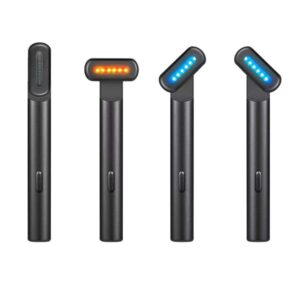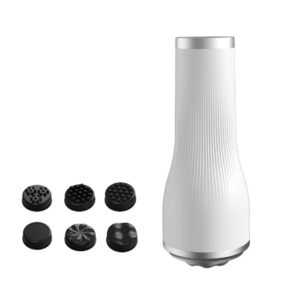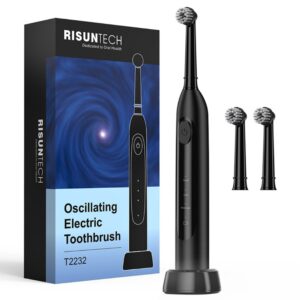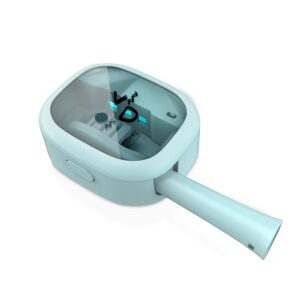Summary
Face rollers and gua sha tools are ancient skincare implements rooted in traditional Chinese medicine, known for their therapeutic and cosmetic benefits. Originating over two thousand years ago, gua sha, a technique involving the scraping of the skin with smooth-edged tools, has historically been utilized to alleviate various ailments and promote overall wellness. In recent years, these practices have surged in popularity in the beauty industry, transforming from traditional healing methods to staples in contemporary skincare routines, celebrated for their potential to improve skin complexion, reduce puffiness, and enhance relaxation.
Gua sha and face rollers are particularly noted for their effectiveness in boosting circulation and lymphatic drainage, leading to healthier skin and reduced inflammation. While gua sha typically employs a scraping motion with tools made from jade or rose quartz, face rollers utilize a gentle rolling action, often enhancing the soothing experience of applying skincare products. Despite their growing acclaim, scientific research on the efficacy of these tools remains limited, with many benefits being primarily anecdotal and further studies required to substantiate their cosmetic claims.
The resurgence of interest in gua sha and face rollers has sparked discussions about cultural appropriation and the commercialization of traditional practices. Critics argue that as these tools gain popularity in Western beauty markets, the cultural significance and historical context of gua sha are often overlooked, leading to a need for greater recognition of their origins in Eastern medicine. Proponents of these practices emphasize the importance of honoring their heritage while integrating them into modern wellness routines, ensuring that both their aesthetic and cultural values are preserved.
As these ancient techniques continue to evolve within the skincare industry, their popularity reflects a broader trend toward holistic and self-care practices, drawing attention to the interplay between tradition and modernity in beauty rituals.
Table of Contents
History
Gua Sha is an ancient healing technique that has its roots in traditional Chinese medicine, with historical records dating back to the Paleolithic Age. While the first written references to Gua Sha appeared during China’s Ming dynasty (1368-1644), its practice likely extends even further into antiquity, reflecting a rich history of use for various ailments, including muscle pain and chronic conditions. The technique involves scraping the skin using a smooth-edged tool, often made of jade or other stones, and has been utilized not only in China but also across other Asian cultures, where variations of the practice exist. Over centuries, Gua Sha has been adapted and integrated into different cultural contexts, creating a diverse tapestry of healing practices that pay homage to its Chinese origins.
In contemporary times, Gua Sha has transitioned into the realm of modern skincare, celebrated for its cosmetic benefits such as facial contouring and improving skin complexion. The popularity of facial rollers, particularly those made from jade, echoes this ancient technique. Used since the 7th century by Chinese imperial elites, these tools were once regarded as essential for maintaining beautiful skin and are now a staple in many skincare routines worldwide. Despite its long history, further research is needed to fully understand the mechanisms behind Gua Sha’s benefits and its effectiveness in both therapeutic and cosmetic applications.
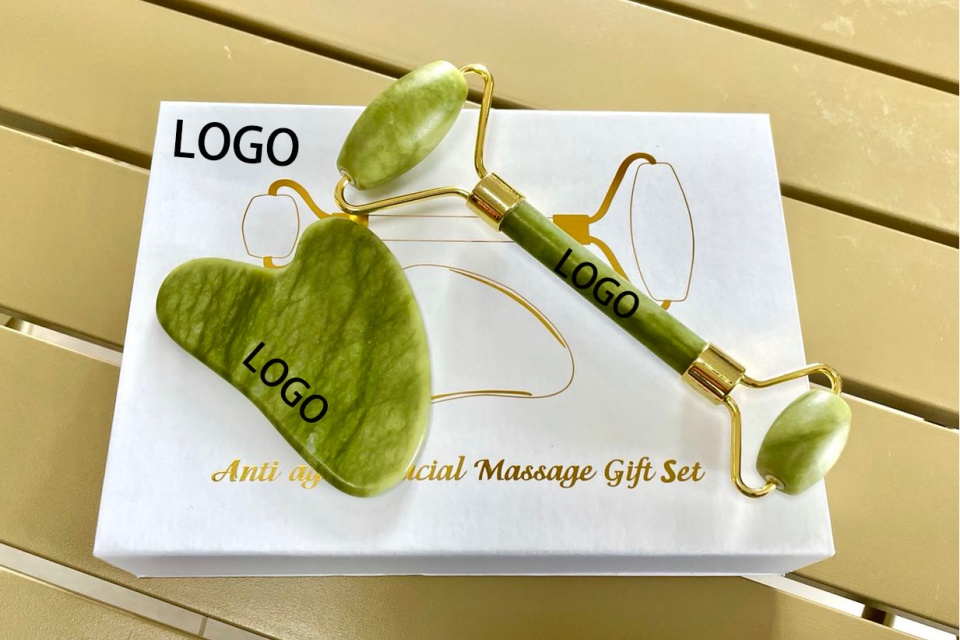
Types of Face Rollers and Gua Sha Tools
Face rollers and gua sha tools are popular skincare instruments used for facial massage and promoting skin health. They come in various shapes, materials, and designs, each offering unique benefits.
Face Rollers
Face rollers typically consist of a handle with a rolling head made of smooth stone. They can have one or two ends: a larger roller for broader areas and a smaller roller for delicate areas such as under the eyes and around the eyebrows.
- Jade: Often associated with traditional Chinese medicine, jade rollers are believed to have soothing and cooling properties. They are generally available in nephrite and jadeite, with nephrite being the more common and less expensive option.
- Rose Quartz: Known for its calming effects, rose quartz rollers can help soothe reactive skin and hold their temperature well, making them ideal for cooling treatments.
- Amethyst: Traditionally said to purify the skin, amethyst is gaining popularity in face rollers, although more research is needed to substantiate its skincare claims.
- Stainless Steel: Sometimes referred to as ice rollers, these tools can be stored in the refrigerator for a refreshing experience that enhances de-puffing effects.
- Plastic: Generally less expensive, plastic rollers may not provide the same cooling benefits as stone rollers and can potentially irritate the skin if dyed.
Gua Sha Tools
Gua sha tools are typically flat and used with short, pressured strokes on the skin to promote circulation and lymphatic drainage.
- Jade: Traditional gua sha tools are often made from jade, taking advantage of its historical significance in Chinese medicine.
- Rose Quartz and Other Stones: Modern gua sha tools may also be made from rose quartz, amethyst, or green aventurine, each selected for their aesthetic appeal and purported benefits.
- Metal and Other Materials: Metal gua sha tools are favored in contemporary practices due to their durability and ease of disinfection. They can also provide vibratory feedback during use, helping practitioners gauge areas of tension.
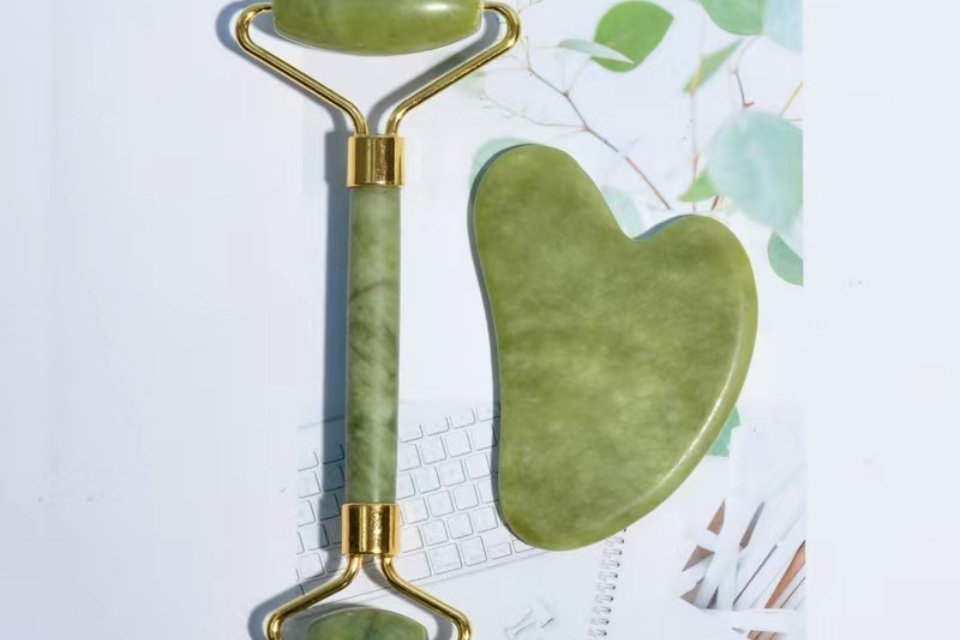
Functional Differences
While both face rollers and gua sha tools are designed for facial massage, they serve slightly different purposes. Face rollers are primarily used for gentle rolling to enhance circulation and reduce puffiness, while gua sha tools often apply more pressure and are used for specific therapeutic effects, including tension relief and lymphatic drainage. By understanding the various types of face rollers and gua sha tools available, users can select the right instrument for their skincare needs and goals.
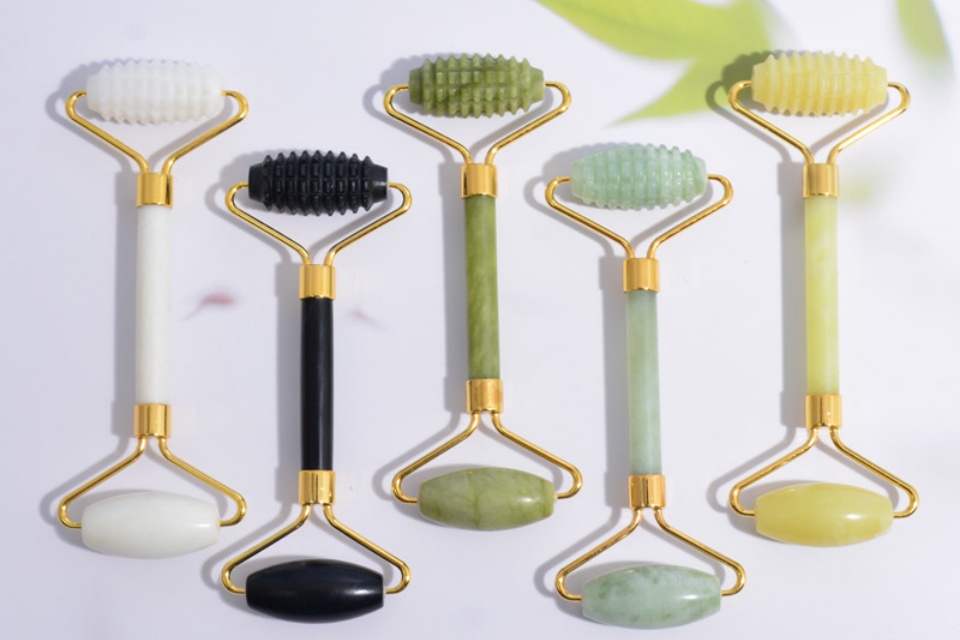
Benefits
Gua sha and facial rollers have garnered attention in the skincare community for their multitude of benefits, bridging ancient techniques with modern wellness practices.
Improved Circulation
One of the primary benefits of gua sha is its ability to enhance blood circulation. Studies have demonstrated that the gentle scraping motion associated with gua sha can stimulate blood flow, increasing oxygen and nutrient delivery to the skin’s surface. This improved circulation can contribute to a healthier, more radiant complexion, while also promoting collagen production, which helps soften fine lines and wrinkles.
Lymphatic Drainage
Gua sha also plays a significant role in promoting lymphatic drainage, which is crucial for reducing puffiness and bloating. By guiding the tool across the skin, users can help move interstitial fluid toward lymph nodes, effectively flushing out waste and decreasing facial swelling. This process supports the body’s natural detoxification system and can enhance the overall appearance of the skin, making it look more toned and vibrant.
Reduction of Inflammation and Puffiness
Both gua sha and facial rollers are effective in alleviating inflammation and puffiness, particularly in sensitive areas like under the eyes. The massage techniques involved can help reduce accumulated fluid and improve microcirculation, providing immediate relief from morning puffiness or sinus pressure. The warming action of gua sha also aids in better absorption of skincare products, enhancing their efficacy.
Enhanced Skincare Routine
In addition to its direct benefits to the skin, incorporating gua sha into a skincare routine can significantly boost the effectiveness of topical treatments. The stimulation of blood flow and lymphatic drainage allows for better penetration of serums and oils, leading to improved results and a more luxurious experience.
Emotional and Physical Well-being
Beyond cosmetic advantages, gua sha can have profound impacts on overall well-being. The practice can serve as a meditative component of self-care, helping to alleviate stress and promote relaxation. Many users report that performing gua sha rituals can enhance their mood and foster a sense of calm, making it a holistic approach to skincare and personal wellness.
Business Benefits for Practitioners
From a business perspective, integrating gua sha into a skincare practice can enhance profitability. As a trending and unique treatment, it attracts clients seeking holistic options, allowing practitioners to diversify their service menu and implement package deals for increased revenue. The minimal overhead costs associated with gua sha tools also make it a cost-effective addition to spa and wellness offerings, presenting opportunities for upselling and improved client retention.
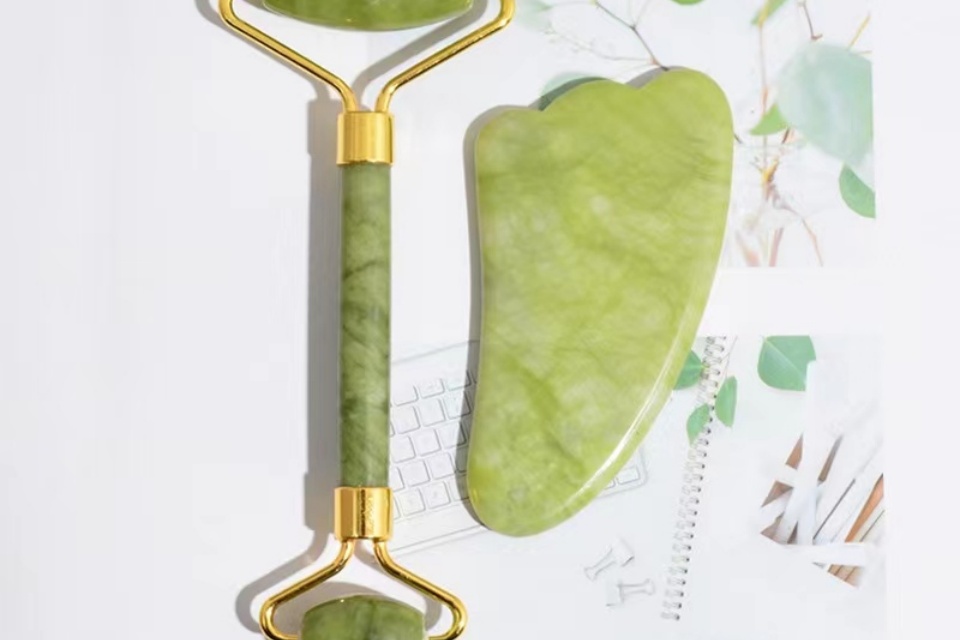
Usage Techniques
Gua Sha is traditionally performed using a smooth-edged tool, often made from jade or other stones, to scrape the skin in specific patterns. Initially used on larger areas of the body, it has evolved to become a popular technique for facial care as well. To effectively use a gua sha tool, begin with a clean face and apply a facial oil or serum to facilitate smooth gliding over the skin. The technique involves starting from the center of the face and sweeping outwards and upwards. For instance, one might begin at the chin and move the tool up along the jawline, then continue onto the neck, carefully avoiding sensitive areas such as the central thyroid region.
Practitioners recommend using the gua sha tool for about five to ten minutes per session, focusing on lymphatic drainage by employing a rhythm of three: applying firmer pressure outward and lighter pressure when moving back toward the center. To see the best results, it is suggested to perform gua sha two to three times per week, with daily practice being optimal as users become more comfortable with the technique.
Face Roller Techniques
Face rollers, often made from materials such as jade or rose quartz, are utilized in a similar manner. They typically feature a smooth, cool surface that can enhance the soothing experience while improving blood circulation and temporarily tightening the skin. To use a face roller effectively, start with a clean face and apply a face oil or cream for lubrication. Begin rolling from the neck upwards, using gentle but firm pressure. This should be followed by upward strokes over the jawline, cheekbones, forehead, eyebrows, and bridge of the nose, with the recommended duration being about five to ten minutes for noticeable effects. Some individuals choose to chill their face roller in the refrigerator before use, which may help reduce morning puffiness and create a refreshing sensation. Regular usage of face rollers can enhance the ritual of skincare, offering immediate but temporary benefits rather than long-lasting results.
Combining Techniques
Both gua sha and face rolling can be integrated into a skincare routine for maximum benefit. While gua sha is more intensive and is often aimed at deeper tissue manipulation, face rollers serve as a gentler alternative for daily use. The combination of both techniques may optimize skin texture, promote lymphatic drainage, and improve the overall appearance of the face. Users can choose to alternate between these methods or combine them in a single routine, adapting their frequency based on skin sensitivity and personal preference.
Scientific Research
Gua sha has been the subject of various scientific studies aimed at exploring its therapeutic effects, particularly regarding musculoskeletal pain and inflammation. The foundational principle behind gua sha involves stimulating the lymphatic system, thereby promoting circulation and facilitating the movement of excess fluids within the body. Research has indicated that gua sha can effectively alleviate conditions such as chronic neck pain, with one notable study demonstrating that participants receiving gua sha experienced more relief compared to those treated with heat therapy.
While many studies focus on the medical benefits of gua sha, there is a growing interest in its potential cosmetic applications. However, current evidence supporting its effectiveness in enhancing skin health and appearance remains limited and primarily anecdotal. Most benefits attributed to gua sha in terms of aesthetics, such as reduced puffiness and improved blood circulation, lack robust scientific validation. Therefore, more extensive research is required to substantiate these claims and assess the long-term effects of gua sha on skin appearance and health.
Modern adaptations of gua sha tools, including metal instruments, have been favored by practitioners for their ease of disinfection and durability. These tools often provide instant feedback on treatment effectiveness, helping practitioners identify areas of tension and guide their approach during therapy sessions. Additionally, the application of gua sha techniques may vary, depending on the specific areas being treated and the desired outcomes, highlighting the need for tailored approaches in both therapeutic and aesthetic contexts.
Popularity and Cultural Impact
Gua sha, a traditional Chinese technique that dates back centuries, has experienced a significant resurgence in popularity, particularly within the beauty industry. While it was originally utilized as a therapeutic practice for various ailments, its transition to facial treatment has sparked discussions about cultural appropriation and the respect for its origins in Eastern medicine.
Historical Context
Historically, gua sha was used primarily on the body to address health issues, but in the 17th century, the upper-class elite in China began adapting the practice for cosmetic purposes, employing jade and other precious stones for facial applications. This adaptation gradually evolved, with tools being improvised from readily available materials, such as soup spoons and even fingers, to perform facial massages. By the time the practice reached the West, it had already transformed significantly, often stripped of its cultural significance and historical context.
Modern Interpretation
In contemporary society, gua sha has become synonymous with skincare rituals and is often showcased on social media platforms, leading to an explosion of interest and usage among individuals seeking non-invasive beauty treatments. The introduction of stylish tools, such as jade rollers and intricately designed gua sha stones, has contributed to its allure, presenting the practice as both luxurious and meditative.
Cultural Appropriation Debate
The growing popularity of gua sha raises important questions about cultural appropriation, particularly regarding how cultural practices are adopted by individuals outside their original context without proper recognition. Critics argue that while gua sha has been commercialized in the West, the respect for its origins and the traditions of traditional Chinese medicine (TCM) are often overlooked. Supporters of the practice emphasize the need for acknowledgment of its roots and the importance of honoring the cultural significance behind the technique.
As gua sha continues to find its place within the modern skincare industry, the dialogue surrounding its cultural impact and significance remains vital in ensuring that the practice is appreciated not just for its aesthetic benefits, but also for its rich historical background and cultural heritage.



